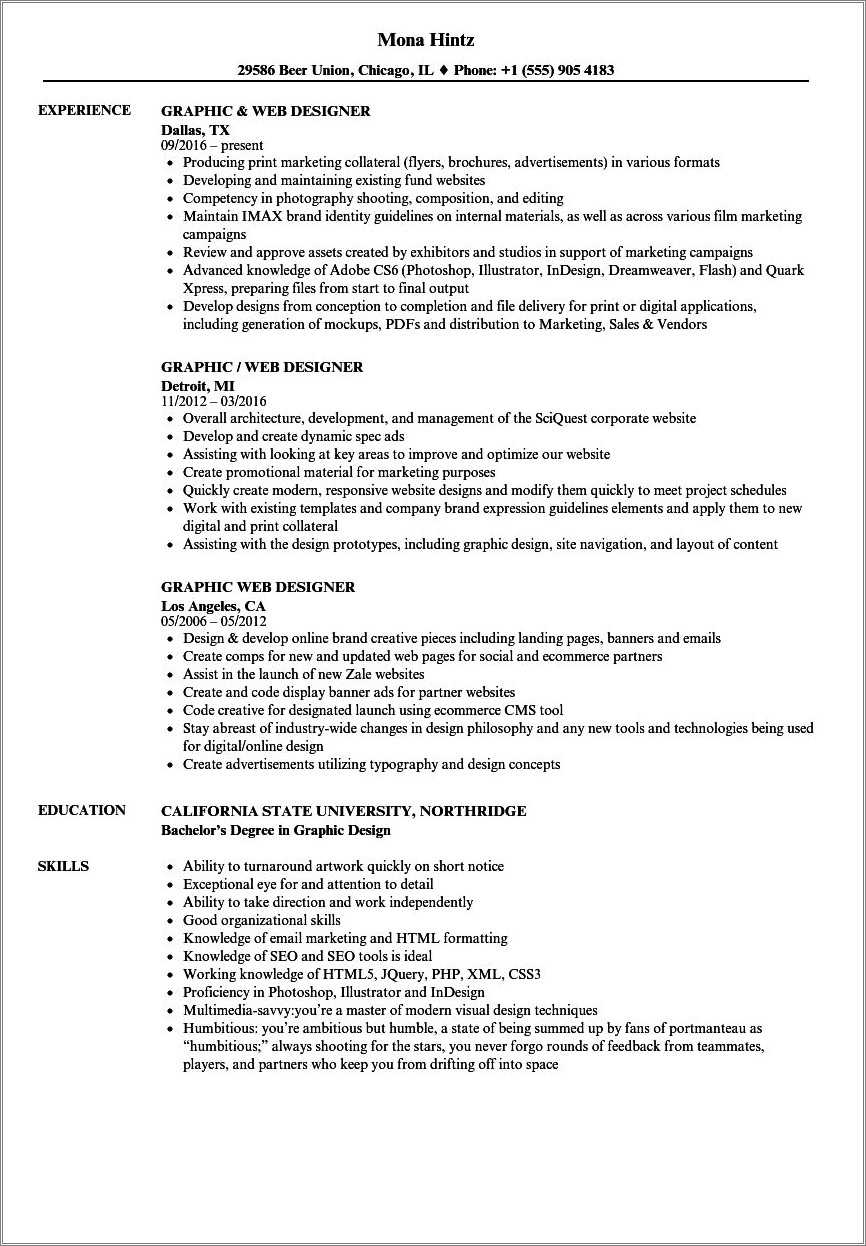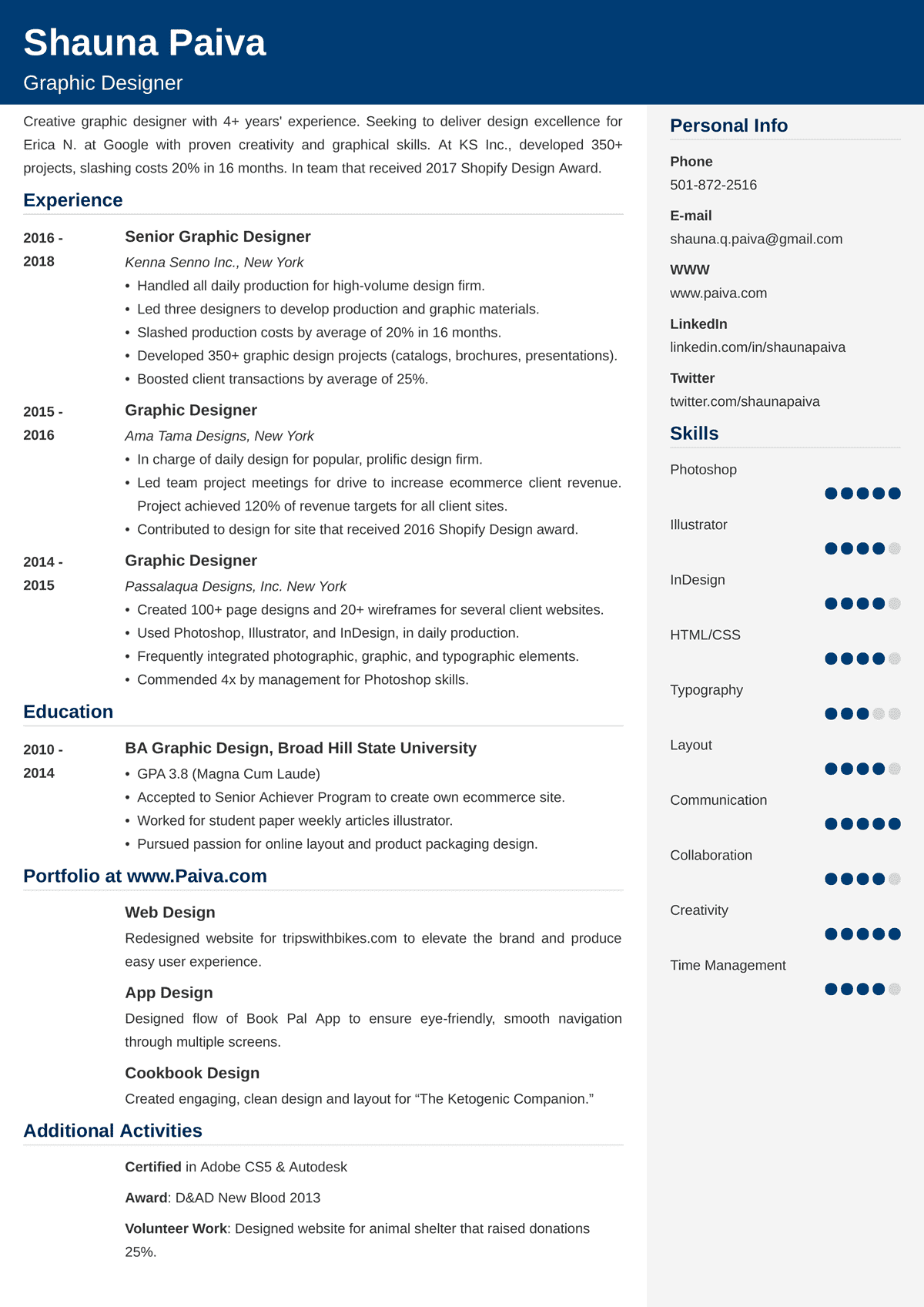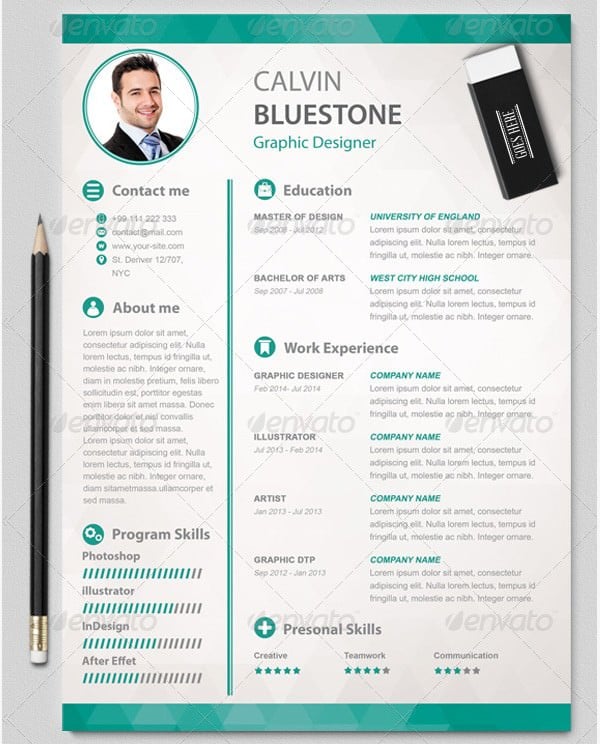Table Of Content

It's a section at the top of your resume that allows you to pick and choose the best and most relevant experience to feature right at the top of your resume. Companies may also value communication skills and the ability to work well in a team, as designers often collaborate with other departments. Continuous learning and experimentation are essential to improving your typographic skills. HTML/CSS is crucial for a Graphic Designer as it enables them to bring their visual designs to life on the web, ensuring accurate and responsive representation across different devices and platforms.
How to Create an Outline for a Graphic Designer Resume
A demonstrated knowledge of sales, marketing, design theory, color theory, typography, or user experience can also be valuable, depending on the role. “Demonstrating that you understand the larger purpose that design serves can be really important,” Chevalier says. The ability to think expansively is a necessary skill for every designer, as it entails the way you see and relate to the world from various perspectives. You can develop this skill through constant, daily practice as opposed to formal study. Employers appreciate graphic designers who can produce novel, imaginative projects.
Highlight Your Relevant Technical Skills
You can add a portfolio section pretty right about the same way you’d add work experience. Work experience is the most important section in your resume (after your portfolio, of course). Once you’ve decided on the format, you need to get your resume layout right. We packed a lot of information into this post so I wanted to distill the key points for you and lay out next steps so you know exactly where to from here. They use fluffy, buzzword-fill language and they only talk about the actions that they took rather than the results and outcomes those actions created. The second method is the one I recommend because it's personalized to your specific resume and target job.
Artist Resume: The 2023 Guide to Art Resumes (10+ Samples & Examples)
Each section, such as “work experience,” “education,” and “skills,” should have clear headers that make it easy for recruiters and hiring managers to scan your resume at a glance. If you’re switching from another field, such as marketing, your current resume may have marketing-relevant experiences. Consider creating a general graphic design resume that you can copy and customize later by adding or deleting information for each job you apply for.
Use the Right Graphic Design Resume Format
Whether you’re applying for graphic design jobs at an agency or want to venture into the world of freelancing, you’ll be getting paid to use your natural creative talents. To distinguish yourself from other graphic designers in the job pool, you need just the right combination of graphic designer skills. In this guide, you’ll learn what technical and soft skills you need to get hired and succeed in your career.
Things to include in your graphic design resume
Because graphic design jobs can differ greatly in duties and requirements, your skills section should reflect your knowledge and abilities in relation to the company or organization. If you properly showcase your various skills, you can easily beat the ATS. Most recruiters don’t have time to go through the nitty-gritty details in your graphic designer resume. They have only seconds to spare, which they’ll likely use to examine your resume’s list of skills and determine whether or not they’re relevant to their needs. But if you plan on applying to online job postings, you’re probably going to have to contend with an applicant tracking system (ATS).
Highlight the graphic design resume skills and duties in the form of resume keywords. As a graphic designer, you need to have a portfolio of your samples from different past work and projects. If you don't have a portfolio, don't feel the need to include a link at all — it's an optional part of your resume header. We also have customization tips for different graphic designer job descriptions and graphic designer cover letters. As a graphic designer, you should have some background knowledge in marketing to sell your design projects and services to an employer or client. You should also know advertising and SEO concepts and how companies target and reach customers.
Browse Skills from Similar Jobs

You should pick the samples that best prove you can do the kind of work you’d be doing in the actual role. The ability to capture still images is a valuable skill for a designer because you don’t need to rely on stock imagery. You will be able to use photography in most of your projects and get the exact shots you need.
20 Skills to Write on a Resume: Resume Essentials in 2024 - The Daily Collegian
20 Skills to Write on a Resume: Resume Essentials in 2024.
Posted: Mon, 06 Nov 2023 08:00:00 GMT [source]
How do I add skills to a Graphic Designer resume?

As a graphic designer, you’ll work account managers and creative directors to create a brief, develop concepts, and finalize a design that meets the client’s objectives. You’ll need excellent time management, the ability to collaborate well and work under pressure, and of course a hefty dose of creativity. Traditionally, graphic designer jobs ask for an undergraduate graphic design degree, but recent trends have seen the industry move away from requiring formal qualifications and toward online short courses.
The skills you list should match those included in the job posting. Your resume is also your first chance to show off your design skills, though you shouldn’t go overboard. Instead, include a link to your portfolio so employers can see more of your work.
When describing your achievements in each role, use hard numbers and metrics to quantify your impact whenever possible. This helps hiring managers understand the scope and results of your work. Use your summary to highlight your most impressive achievements and the impact your work has had on your previous employers or clients. Quantify your results whenever possible to give the hiring manager a clear understanding of your value. If you’ve been freelancing for a while, it might make sense to structure your work experience section according to different projects rather than clients. This lets you highlight your most impressive accomplishments in a way that is easy to follow and is clear about your specific role and achievements.
While the text is the common ground between a graphic designer and a resume, the writing style of both differs vastly. A resume is typically divided into sections such as header, personal information, title, etc. If you write your graphic design job description right, you’ll stand out like Paula Scher. Follow our step-by-step guide and learn how to nail your graphic designer resume with perfect graphic design samples. Graphic design is a field that values both creativity and technical skills. Use your education section to showcase your training in design principles, software, and tools.
A summary section basically serves the purpose of those who have professional experience of more than 3 years. If you have graphic design resume skills like that of using Adobe, Photoshop or Illustrator, then don't include them in the graphic designer resume skills section that you just made. Throughout your work experience, emphasize the specific design skills and tools you've used to succeed in your roles.
Not all employers fully understand the nature of freelance work, so the more specific you can be about your accomplishments, the better. Listing the number of projects, designs, and proposals you completed makes it clear how you were spending your time and helps emphasize soft skills like time management and work ethic. It’s always a good idea to use the exact title of the job you’re applying for on your resume. If you’ve held a position with the same responsibilities but under a different name, or if the titles are often used interchangeably, you can list both job titles at the start of your resume.
If you want to win more interviews and offers, you need to make that time count. That starts with hitting the reader with the exact information they're looking for right at the top of your resume. All of the content in this guide is based on data from coaching thousands of job seekers (just like you!) who went on to land offers at the world's best companies.

No comments:
Post a Comment